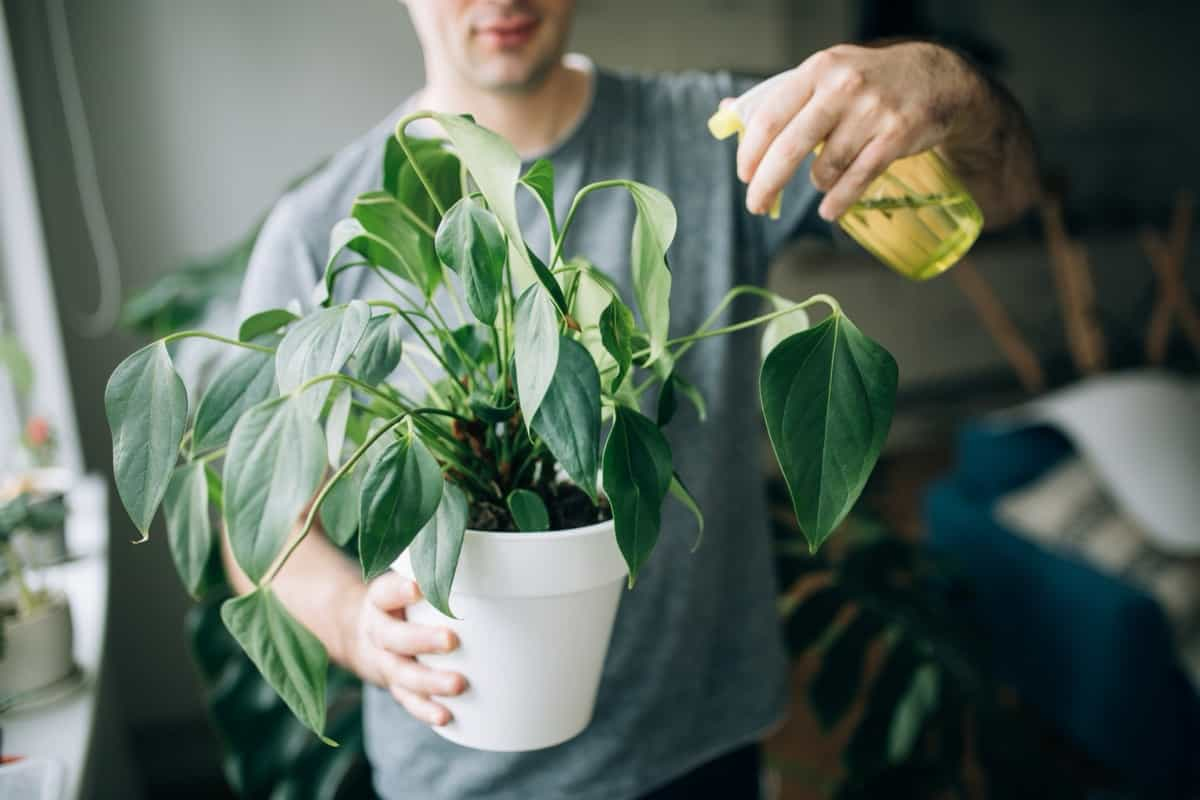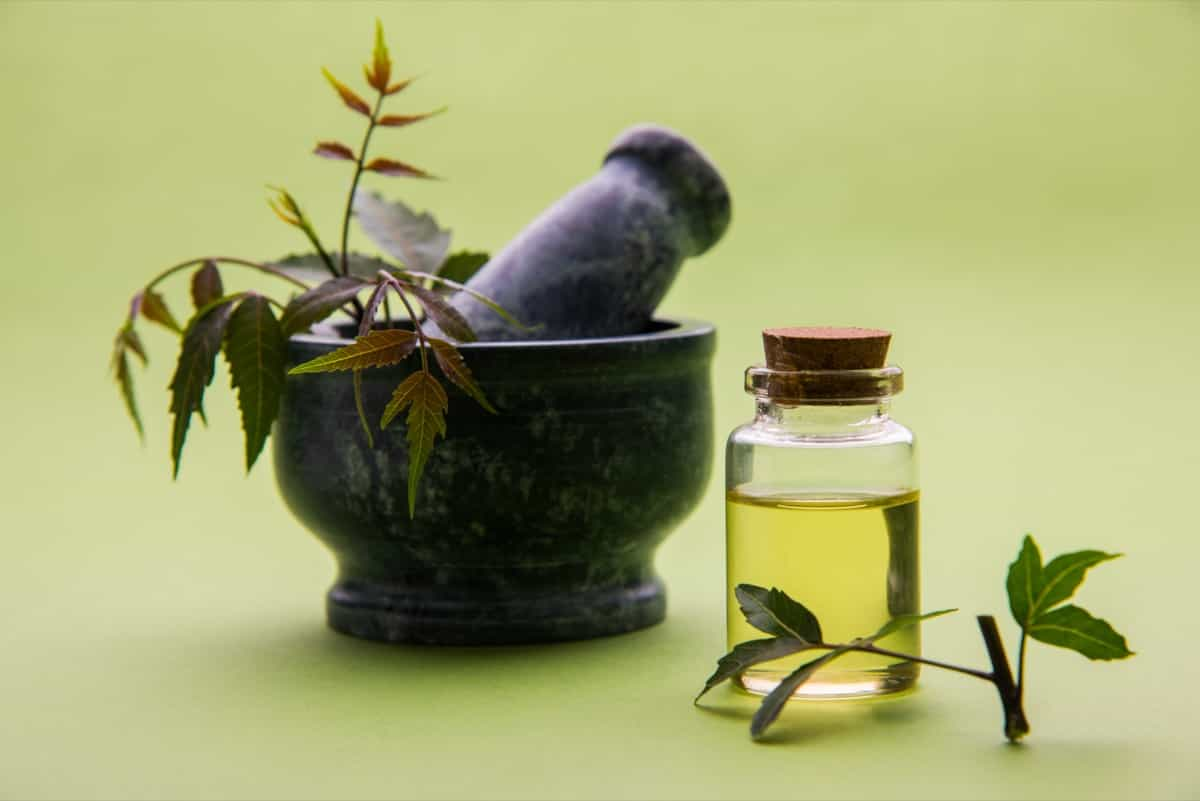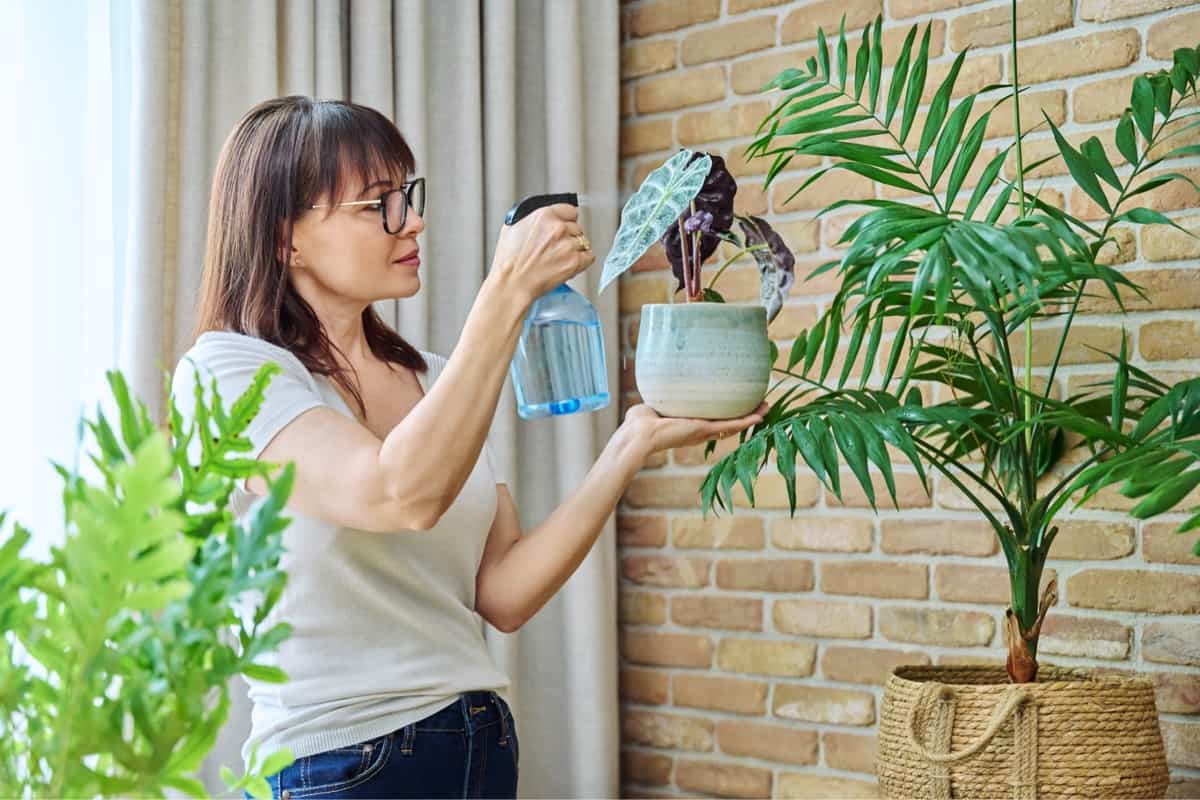Neem oil, derived from the neem tree’s seeds, is a versatile and natural solution for indoor plant care. Renowned for its insecticidal, fungicidal, and antibacterial properties, neem oil is a potent and eco-friendly remedy against common pests like aphids, mites, and scale insects. Its active compounds disrupt the insects’ life cycle, inhibiting their growth and deterring feeding.

Also, neem oil is a preventive measure, protecting plants from fungal diseases. To use, dilute neem oil according to instructions and apply it to both sides of the plant’s leaves. Its efficacy and minimal impact on beneficial insects make neem oil an excellent choice for maintaining healthy indoor plants while minimizing environmental impact.
How to Use Neem Oil on Indoor Plants
Neem Oil Benefits for Indoor Plants
Neem oil offers numerous benefits for indoor plants. Its natural insecticidal properties make it effective against common pests, preventing infestations and promoting plant health. The oil’s fungicidal attributes safeguard plants from diseases, ensuring a thriving environment. Neem oil also acts as a growth stimulant, encouraging robust foliage and vibrant blooms.
Being biodegradable and environmentally friendly, it poses minimal risk to beneficial insects. Easy to apply and safe for most plants, neem oil is a versatile solution for pest control, disease prevention, and overall plant care in indoor settings.
Neem Oil Application on Indoor Plants: A Detailed Step-by-Step Tutorial
- Mix neem oil with water per package instructions, typically 1-2 tablespoons per 4 liters of water.
- Before widespread application, test the solution on a small section of your plant to ensure it won’t cause adverse reactions.
- Remove dust and debris from the plant by wiping gently the leaves with a damp cloth.
- Use a spray bottle to evenly coat both sides of the leaves with the neem oil solution. Ensure coverage of pests’ hiding spots.
- Concentrate on areas prone to pests, such as leaf undersides and joints.
- Apply every 7-14 days or as recommended, especially for ongoing pest prevention.
- Apply neem oil in the evening to prevent leaf burn and allow the oil to work overnight.
How to Safely Use Neem Oil on Your Indoor Plants
- Follow the manufacturer’s guidelines for neem oil concentration and application frequency.
- Before widespread use, test a small portion of the plant for any adverse reactions to the neem oil mixture.
- Mix neem oil with water as directed; typically, 1-2 tablespoons per 4 liters of water.
- Apply neem oil in the late evening to avoid potential leaf burn and allow the oil to work overnight.
- If dealing with pests, isolate affected plants to prevent the infestation from spreading.
- Spray the neem oil solution evenly on both sides of the leaves, covering potential pest-hiding spots.
- Apply regularly, every 7-14 days, for ongoing pest prevention and disease control.
In case you missed it: How to Use Neem Oil on Flowering Plants: A Natural Way of Controlling Bugs in Flowering Plants

Neem Oil works as a Natural Pest Control Method for Indoor Plants
Neem oil is a potent and natural pest control method for indoor plants. Derived from the neem tree, it contains compounds that disrupt the life cycle of common pests like aphids, mites, and scale insects. Diluted neem oil, applied to both sides of leaves, acts as an effective deterrent, preventing infestations and minimizing damage.
Its eco-friendly nature ensures minimal harm to beneficial insects. The regular application addresses existing pest issues and serves as a preventive measure, fostering healthy indoor plants by discouraging pests and promoting overall well-being.
Step-by-Step Guide to Using Neem Oil on Indoor Plants for Disease Prevention
- Mix neem oil (1-2 teaspoons) with a few drops of dish soap liquid in a quart of warm water. Shake well to emulsify the solution.
- Fill a spray bottle with the neem oil mixture. Lightly spray the solution on the leaves, covering both sides.
- Focus on the undersides of leaves where pests often hide. Apply in the evening to avoid leaf burn in sunlight. Repeat every 7-14 days for prevention.
- For existing issues, increase frequency to every 5-7 days. Ensure good ventilation during and after application.
- Monitor plant health and adjust treatment as needed. Store the remaining neem oil in a cool, dark place.
Neem Oil Application Techniques for Indoor Plant Health
To apply neem oil for optimal indoor plant health, mix 1-2 teaspoons of neem oil with a few drops of mild dish soap liquid in a quart of lukewarm water. Shake well and spray the solution on plant leaves, focusing on the undersides where pests often hide. Apply early in the morning or evening to avoid sun exposure.
Repeat every 7-14 days as a preventive measure or when pest issues arise. Neem oil acts as a natural pesticide, fungicide, and miticide, combating common indoor plant pests like aphids and spider mites while promoting overall plant vitality. Always test on a small area first to avoid any adverse reactions.
Using Neem Oil to Treat Common Indoor Plant Pests
Neem oil is a potent and natural solution for combating indoor plant pests. To treat infestations, prepare a neem oil solution by mixing 1-2 teaspoons of neem oil with a small amount of mild dish soap in a quart of lukewarm water. Thoroughly coat the affected plant surfaces, focusing on the undersides of leaves where pests congregate. Neem oil disrupts the life cycle of pests, acting as an insecticide, fungicide, and miticide.
In case you missed it: How to Use Neem Oil on Strawberry Plants: A Natural Way to Control Strawberry Pests

It suffocates pests and inhibits their ability to feed and reproduce. Apply the solution every 7-14 days until the infestation subsides. Neem oil not only eradicates pests like aphids, spider mites, and whiteflies but also promotes plant health by boosting immunity and preventing fungal issues. Always test on a small area first and avoid application during peak sunlight to prevent leaf burn. Regular use ensures long-term protection for thriving indoor plants.
Neem Oil Dos and Don’ts for Indoor Plant Care
Do’s
- Always dilute neem oil according to recommended ratios to avoid plant damage.
- Conduct a small patch test on a single leaf before widespread application to ensure plant compatibility.
- Apply neem oil early morning or evening to prevent leaf burn from sunlight.
- Thoroughly cover both sides of leaves and affected plant surfaces for effective pest control.
- Apply neem oil every 7-14 days as a preventive measure or when pest issues arise.
- Rotate neem oil with other pest control methods to prevent pests from developing resistance.
Don’ts
- Avoid excessive neem oil application, as it may harm plants and disrupt the natural balance.
- Do not apply neem oil in direct sunlight to prevent leaf burn.
- Avoid mixing neem oil with incompatible chemicals; follow manufacturer guidelines.
- Refrain from applying neem oil to stressed or dehydrated plants, which may exacerbate issues.
- Ensure good ventilation while applying neem oil indoors to minimize respiratory irritation.
In case you missed it: How to Use Neem Oil on Terrace Garden Plants: Natural Way to Kill Pests in the Terrace Gardens

Conclusion
In conclusion, using neem oil on indoor plants is a step-by-step process for effective pest control and plant health. Consistency is key, with regular applications preventing and treating common pests. Following these guidelines ensures a thriving indoor garden, free from pests and conducive to plant vitality.
- Feed Your Flock for Less: Top 10 Tips to Save on Chicken Feed
- Ultimate Guide to Ossabaw Island Hog: Breeding, Raising, Diet, and Care
- Hatching Answers: The Top 10 Reasons Your Chickens Aren’t Laying Eggs
- Eggs and Economics: Breaking Down the Cost of Raising Backyard Chickens
- Defend Your Greens: Proven Methods to Keep Iguanas Out of Your Garden
- Ultimate Guide to Cinnamon Queen Chicken: A Comprehensive Guide for Beginners
- Ultimate Guide to California Tan Chicken: Breeding, Raising, Diet, Egg-Production and Care
- Ultimate Guide to Marsh Daisy Chicken: Breeding, Raising, Diet, and Care
- 10 Types of Chicken Farming Businesses You Can Start for Profits